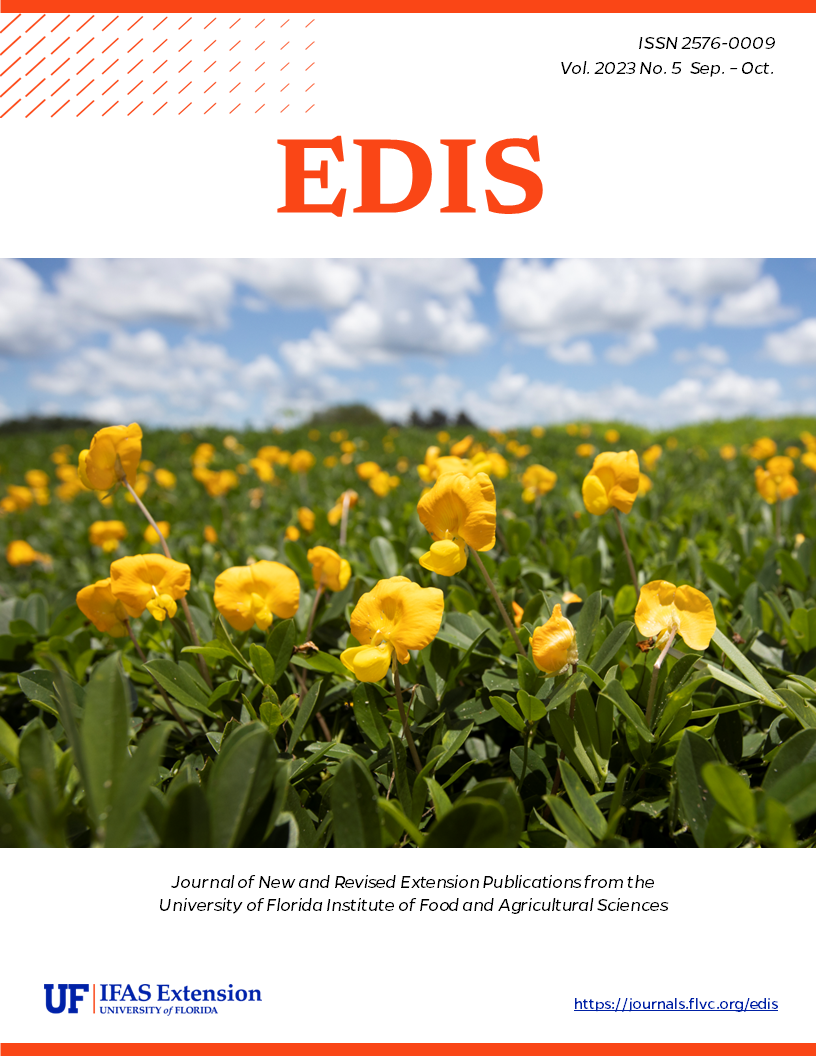Abstract
The oyster aquaculture industry has grown quickly in recent years. New farming techniques target specific attributes that increase oysters' value and allow them to be sold in the high-value, half-shell market. A lack of economic data makes it difficult for growers to determine which specific attributes increase oyster value, however. This publication summarizes findings from a recent study that examined restaurant menus to obtain economic data on raw, half-shell oysters. Major findings indicate that brand is an oyster attribute that provides value, and that marketing oysters with information on two or more attributes can also result in higher prices. Additionally, locally sourced oysters are often sold at cheaper prices, providing an opportunity for growers from outside regions to enter new markets. The findings will be useful to Florida oyster growers as attempts to expand Florida’s oyster aquaculture industry continue.
References
Asche, F. 2008. Farming the Sea. Marine Resource Economics 23:527–547. https://doi.org/10.1086/mre.23.4.42629678
Botta, R., F. Asche, J. S. Borsum, and E. V. Camp. 2020. “A Review of Global Oyster Aquaculture Production and Consumption.” Marine Policy 117. https://doi.org/10.1016/j.marpol.2020.103952
Botta, R., T. Garlock, J. L. Anderson, F. Asche, and A. Ropicki. 2022. “Market Opportunities for Florida’s Emerging Oyster Aquaculture Industry.” Report submitted to UF/IFAS SEEDIT Program.
Chen, J. Q., M. C. Haws, and Q. S. W. Fong. 2017. “Locally Grown Oysters in Hawai ‘i : Chef Preference and Local Premium?” Journal of the World Aquaculture Society 48:972–980. https://doi.org/10.1111/jwas.12430
Dame, R., L. Sturmer, C. Adams, R. Weldon, and K. A. Grogan. 2019. “Financial Risk in Off-bottom Oyster Culture along Florida’s West Coast:” FE1070, 9/2019. EDIS, 2019(5): 10–10. https://doi.org/10.32473/edis-fe1070-2020
de Melo, C. M. R., K. Divilov, B. Schoolfield, and C. Langdon. 2019. “Selection of Group and Individual Traits of Pacific oysters (Crassostrea gigas) on the West Coast, US.” Aquaculture 512:734389. https://doi.org/10.1016/j.aquaculture.2019.734389
Florida Aquaculture Policy Act, Fla. Stat. § 597. 2015. https://www.flsenate.gov/Laws/Statutes/2015/Chapter597/All
Florida Department of Agriculture and Consumer Services. 2020. Florida Aquaculture Industry Overview.
Kecinski, M., K. D. Messer, L. Knapp, and Y. Shirazi. 2017. “Consumer Preferences for Oyster Attributes: Field Experiments on Brand, Locality, and Growing Method.” Agricultural and Resource Economics Review 46:315–337. https://doi.org/10.1017/age.2017.21
Mizuta, D. D., and G. H. Wikfors. 2019. “Seeking the Perfect Oyster Shell.” Reviews in Aquaculture 11 (3): 586–602. https://doi.org/10.1111/raq.12247
Petrolia, D. R., W. C. Walton, and L. Yehouenou. 2017. “Is there a market for branded Gulf of Mexico Oysters?” Journal of Agricultural and Applied Economics. 49:45–65. https://doi.org/10.1017/aae.2016.30
USDA, 2019. 2018 Census of Aquaculture. 2017 Census Agric. 3, AC-17-SS-2.
Walsh, P. 2020. Cultivating Cooperatives: Benefits and Challenges of Co-Ops and Recommendations for Maine’s Emerging Aquaculture Industries. Graduate Program in Ocean Food Systems, University of New England, Maine, USA.
Walton, W. C., F. S. Rikard, G. I. Chaplin, J. E. Davis, C. R. Arias, and J. E. Supan. 2013. “Effects of Ploidy and Gear on the Performance of Cultured Oysters, Crassostrea virginica: Survival, Growth, Shape, Condition Index and Vibrio Abundances.” Aquaculture 414–415:260–266. https://doi.org/10.1016/j.aquaculture.2013.07.032

